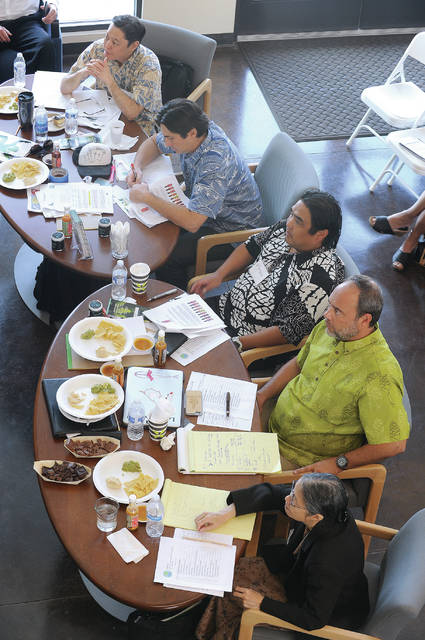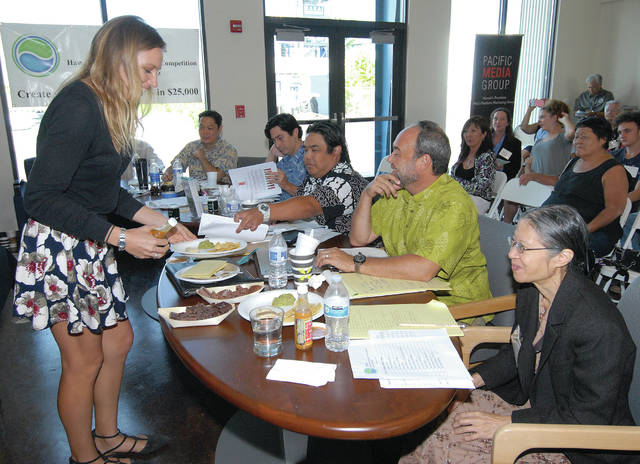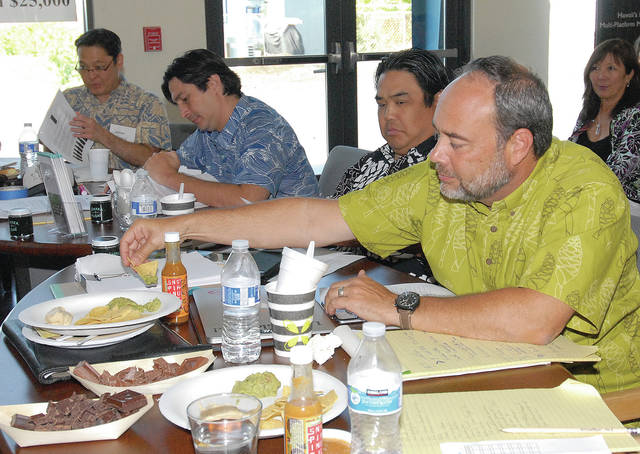KAILUA-KONA — With pitches about everything from tiny homes to agriculture, from hot sauce to renewable energy, there was plenty of entrepreneurial spirit to go around Saturday at the Hawaii Island Business Plan Competition. ADVERTISING KAILUA-KONA — With pitches about
KAILUA-KONA — With pitches about everything from tiny homes to agriculture, from hot sauce to renewable energy, there was plenty of entrepreneurial spirit to go around Saturday at the Hawaii Island Business Plan Competition.
The event marked round two of the competition, where 15 island entrepreneurs were invited to pitch their business plan and vision to a group of judges for a shot at winning $25,000 to boost their business or realize their dreams.
“On the Big Island, that amount of money could really be transformative for a new startup business that’s just trying to get going,” said Jim Wyban, HIplan co-chair.
Among those vying for the top prize was David Real, founder of Bokoa Farms, who was pitching his plan to process and package waiawi, or strawberry guava, wood chips and market them for barbecuing.
The idea came out of his ongoing mission to save and restore the koa population on his property, which is directly threatened by waiawi.
“So what do we do with all this waiawi is the question,” he told the judges during his presentation.
As he thought on what he could do with the waiawi, he said after the presentation, he eventually determined to make wood chips on the — at the time joking — suggestion of a friend.
“After a couple of months it sunk in,” he told West Hawaii Today. “And I researched the wood chip market and I realized, ‘You know what? This might be doable.’”
And $25,000 could be a big help. In his presentation, he outlined how the prize money could go toward marketing the product as well as paying for equipment and packaging, among other things.
“It’ll get me ramped up pretty quickly,” he said.
The 15 entrepreneurs were selected from 43 entries submitted to the competition’s first round.
Of the 15 semi-finalists, just eight will make it through to the final round: a business “triathlon” in which the finalists are scored on their business plans, another 15-minute presentation to judges and a final “elevator pitch” in which entrepreneurs will have just two minutes to sell their visions. The winner is chosen from the top combined score of the three events.
That final round, when the top 8 will compete for the $25,000, is scheduled for Nov. 4.
“We think we’ve really tapped into this kind of unrecognized ecosystem that there’s already these people all around the Big Island that are trying to get businesses started, and this may be a way that we can help them along in the process and kind of accelerate that program and get them jump started into what they’re doing,” said Wyban.
This is the competition’s second year. Wyban said the first year was “wildly successful” and gave them the enthusiasm to continue on to year two.
Last year’s winner was Ono Queens, a queen bee breeding company in Pahoa.
Wenndy Klepps, who started the business with her husband in 2015 said winning the top prize was — like Wyban said it could be — transformative, allowing them to buy new equipment for the operation.
“Winning that money, that just sent us into a whole new level,” she said. “That put us into the arena where we needed to be.”
And having seen the other presentations competing for the prize that year, Klepps said she believes there’s a “great amount of growth that can happen here, without a doubt.”
“It’s actually really invigorating to see other people out there doing something new or trying really hard to expand something that they’re really into,” she said.
In addition to the money being awarded to local entrepreneurs, Wyban said they will also be awarding two scholarships — one to a University of Hawaii student and another to a Hawaii Community College student — both for one year of free tuition.
“The whole concept of the HIplan Business Competition is to create or enrich an entrepreneur ecosystem on the Big Island,” Wyban said. “And an ecosystem is a lot of different individual parts that come together and kind of work together to get things moving.”





